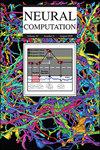A Survey on Artificial Neural Networks in Human—Robot Interaction
IF 2.1
4区 计算机科学
Q3 COMPUTER SCIENCE, ARTIFICIAL INTELLIGENCE
引用次数: 0
Abstract
Artificial neural networks (ANNs) have shown great potential in enhancing human-robot interaction (HRI). ANNs are computational models inspired by the structure and function of biological neural networks in the brain, which can learn from examples and generalize to new situations. ANNs can be used to enable robots to interact with humans in a more natural and intuitive way by allowing them to recognize human gestures and expressions, understand natural language, and adapt to the environment. ANNs can also be used to improve robot autonomy, allowing robots to learn from their interactions with humans and to make more informed decisions. However, there are also challenges to using ANNs in HRI, including the need for large amounts of training data, issues with explainability, and the potential for bias. This review explores the current state of research on ANNs in HRI, highlighting both the opportunities and challenges of this approach and discussing potential directions for future research. The AI contribution involves applying ANNs to various aspects of HRI, while the application in engineering involves using ANNs to develop more interactive and intuitive robotic systems.人工神经网络在人机交互中的研究进展。
人工神经网络(ann)在增强人机交互(HRI)方面显示出巨大的潜力。人工神经网络是受大脑中生物神经网络的结构和功能启发的计算模型,它可以从例子中学习并推广到新的情况。人工神经网络可以通过让机器人识别人类的手势和表情,理解自然语言,并适应环境,从而使机器人以更自然、更直观的方式与人类互动。人工神经网络还可用于提高机器人的自主性,使机器人能够从与人类的互动中学习,并做出更明智的决定。然而,在人力资源研究中使用人工神经网络也存在挑战,包括需要大量的训练数据、可解释性问题以及潜在的偏见。本文探讨了人工神经网络在HRI中的研究现状,强调了这种方法的机遇和挑战,并讨论了未来研究的潜在方向。人工智能的贡献包括将人工神经网络应用于人力资源研究所的各个方面,而在工程上的应用则涉及使用人工神经网络开发更具交互性和直觉性的机器人系统。
本文章由计算机程序翻译,如有差异,请以英文原文为准。
求助全文
约1分钟内获得全文
求助全文
来源期刊

Neural Computation
工程技术-计算机:人工智能
CiteScore
6.30
自引率
3.40%
发文量
83
审稿时长
3.0 months
期刊介绍:
Neural Computation is uniquely positioned at the crossroads between neuroscience and TMCS and welcomes the submission of original papers from all areas of TMCS, including: Advanced experimental design; Analysis of chemical sensor data; Connectomic reconstructions; Analysis of multielectrode and optical recordings; Genetic data for cell identity; Analysis of behavioral data; Multiscale models; Analysis of molecular mechanisms; Neuroinformatics; Analysis of brain imaging data; Neuromorphic engineering; Principles of neural coding, computation, circuit dynamics, and plasticity; Theories of brain function.
 求助内容:
求助内容: 应助结果提醒方式:
应助结果提醒方式:


